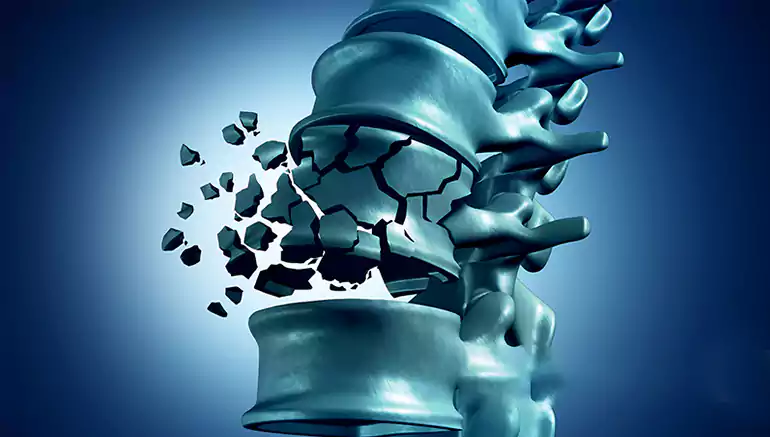
Breaks in the spinal bones, often due to injury or weakness. Treatment involves immobilization, pain management, and sometimes surgery.
These are breaks that occur in one or more of the 33 vertebrae that form the spinal column. Vertebral fractures can result from a variety of causes, including traumatic injuries such as falls, motor vehicle accidents, or sports-related incidents. They can also occur due to weakened bones caused by conditions like osteoporosis, tumors that metastasize to the spine, or even stress fractures from repetitive strain. The symptoms of a vertebral fracture can vary depending on the location and severity of the break but often include sudden and severe back pain that may worsen with movement, tenderness to the touch over the fracture site, muscle spasms, and potentially neurological symptoms such as numbness, tingling, or weakness in the legs if there is nerve compression. Diagnosis typically involves a physical examination and imaging studies, with X-rays being the initial step to identify the fracture. More detailed imaging like CT scans or MRI scans may be necessary to assess the extent of the injury, identify any spinal cord or nerve root compression, and determine the stability of the fracture. Treatment approaches are tailored to the specific type and stability of the fracture. Stable fractures may be managed conservatively with pain medication, rest, and immobilization using a brace or cast to allow the bone to heal. Physical therapy is often initiated once the initial pain subsides to help restore strength, flexibility, and range of motion. Unstable fractures or those causing neurological deficits may require surgical intervention to stabilize the spine, decompress any compressed neural structures, and prevent further damage. Surgical options can include spinal fusion, where adjacent vertebrae are joined together with hardware to prevent movement, or vertebroplasty and kyphoplasty, minimally invasive procedures to inject bone cement into the fractured vertebra to stabilize it and reduce pain. Rehabilitation following surgery is crucial for regaining function and returning to daily activities.